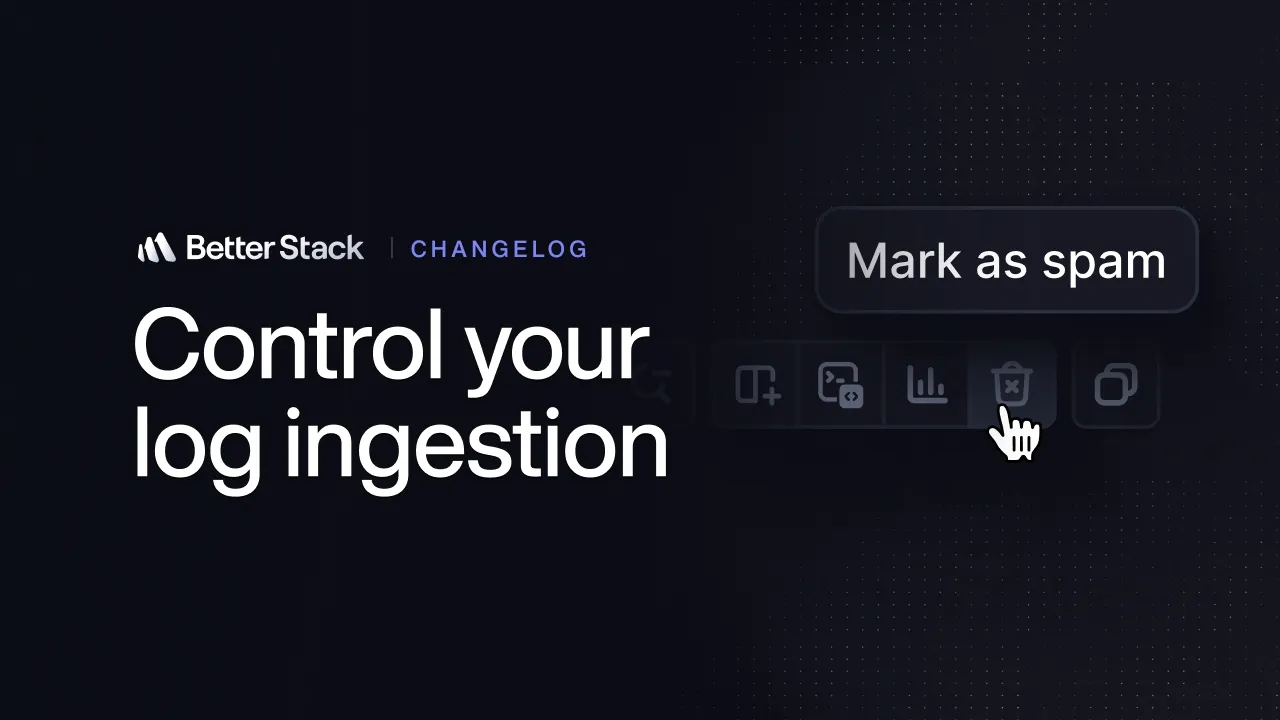
Managing log data effectively is a critical aspect of modern application monitoring and troubleshooting. With the latest updates to Better Stack's log management platform, developers and operations teams now have unprecedented control over their log ingestion pipeline, making it easier than ever to focus on the logs that truly matter while optimizing storage and costs.
Understanding Log Ingestion and Its Challenges
Log ingestion is the process of collecting, parsing, and storing log data from various sources into a centralized platform for analysis. Traditional log ingestion tools often require complex configurations at the source level, forcing teams to decide which logs to ship before they even reach the analysis platform. This approach creates several challenges:
- Complicated log shipper configurations that require frequent updates
- Difficulty filtering out noise and irrelevant data
- Risk of exposing sensitive information in logs
- Increased storage costs from ingesting unnecessary data
- Performance impact from processing excessive log volume
Better Stack's new features address these challenges by moving control of the log ingestion pipeline directly into the platform itself, giving users the power to filter, transform, and redact logs at ingestion time.
Simplifying Log Management with One-Click Filtering
One of the most powerful new features is the ability to mark irrelevant logs as spam with a single click. When viewing logs in Liveetail, users can now easily identify and filter out unwanted log entries without having to modify their log shipper configurations.
- Filter out logs based on any field value
- Remove all similar logs using pattern matching
- Adjust ingestion filters at any time
- Reduce noise and focus on meaningful log data
- Excluded logs don't count toward usage quotas

This feature dramatically simplifies the process of maintaining a clean log stream. Instead of modifying configurations at the source or writing complex filtering rules, teams can now interactively manage their log ingestion pipeline directly from the user interface. This approach not only saves time but also reduces the cognitive load associated with log management.
Advanced Log Transformation with VRL
For teams that need more sophisticated control over their log ingestion process, Better Stack now offers Vector Remap Language (VRL) transformations. This powerful feature allows users to modify logs before they're stored, providing complete control over log structure and content.
- Restructure logs by moving fields around
- Parse any log format for better organization
- Delete specific fields containing sensitive data
- Drop entire log events based on custom conditions
- Test transformations instantly to verify results

VRL transformations are particularly valuable for compliance and security purposes. Teams can now automatically redact sensitive information such as personally identifiable information (PII), authentication tokens, or credit card numbers before logs are stored. This ensures that sensitive data never reaches persistent storage while still preserving the valuable context needed for troubleshooting.
The Business Impact of Optimized Log Ingestion
Implementing effective log ingestion controls delivers significant business benefits beyond just technical improvements. By filtering out noise and focusing on meaningful data, organizations can:
- Reduce storage costs by eliminating irrelevant logs
- Improve query performance for faster troubleshooting
- Enhance security posture by redacting sensitive information
- Increase developer productivity with cleaner log streams
- Enable more effective log analytics with higher quality data
The optimization of log ingestion processes directly impacts the bottom line by reducing infrastructure costs while simultaneously improving the effectiveness of observability practices. Teams spend less time wading through irrelevant data and more time deriving actionable insights.
Implementing an Effective Log Ingestion Strategy
To make the most of these new log ingestion capabilities, consider adopting a progressive approach to implementation:
- Start by identifying and marking obvious noise as spam
- Create basic transformations to standardize log formats
- Implement redaction rules for sensitive information
- Develop more sophisticated filtering based on patterns
- Continuously refine your ingestion pipeline as needs evolve

The flexibility to adjust ingestion filters at any time means teams can start simple and gradually refine their approach. This iterative process allows for continuous improvement of the log ingestion pipeline without disrupting existing workflows.
Best Practices for Log Ingestion and Aggregation
To maximize the value of your log data while minimizing costs and complexity, consider these best practices for log ingestion and aggregation:
- Define clear logging levels (DEBUG, INFO, WARNING, ERROR) and filter accordingly
- Create standardized log formats across all applications
- Establish consistent field naming conventions
- Implement context-aware filtering based on environment or service
- Regularly review and update ingestion rules as applications evolve
- Document your log ingestion strategy for team alignment
By implementing these practices alongside Better Stack's new log ingestion controls, teams can create a more efficient, secure, and cost-effective observability pipeline. The result is faster troubleshooting, better security compliance, and more actionable insights from log data.
Conclusion: The Future of Log Ingestion
The evolution of log ingestion tools toward greater flexibility and control represents a significant advancement in observability practices. By moving filtering, transformation, and redaction capabilities directly into the log management platform, Better Stack has eliminated the need for complex log shipper configurations and empowered teams to focus on what matters most.
This approach to log ingestion meaning is clear: greater control leads to better insights. As organizations continue to generate increasing volumes of log data, the ability to efficiently process, filter, and transform that data at ingestion time will become even more critical to maintaining effective observability practices.
With these new capabilities, teams can now say goodbye to the hassle of deciding which logs to ship from their applications and instead focus on extracting maximum value from their log data through optimized ingestion pipelines and powerful analytics.
Let's Watch!
7 Powerful Ways to Control Your Log Ingestion Pipeline for Better Analytics
Ready to enhance your neural network?
Access our quantum knowledge cores and upgrade your programming abilities.
Initialize Training Sequence